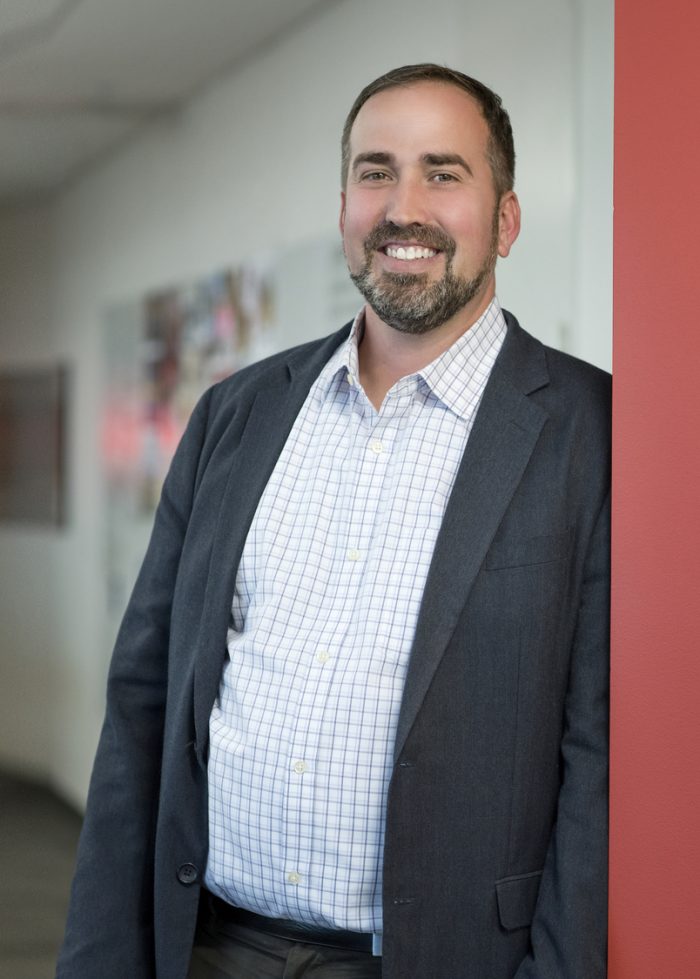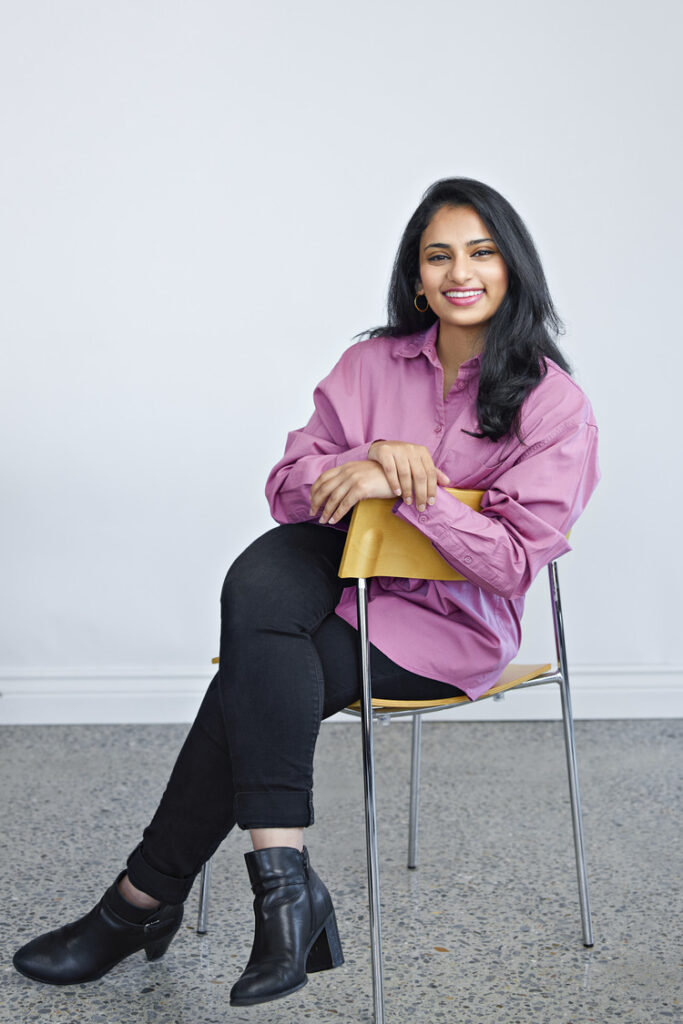
Baltimore, MD (December 11, 2017) – After leading CannonDesign’s education practice in Baltimore for a little over a year, Mike Glaros, AIA, LEED AP, has been appointed to lead their multidisciplinary Baltimore office. As the Baltimore office practice leader, Mike will continue leading CannonDesign’s local education efforts, while expanding his focus to the overall growth and development of the office. This includes fostering new community relationships, mentoring employees, championing business development, and creating new client partnerships across the health, education, civic and science industries.
We had the chance to sit down with Mike and ask him a few questions about goals, upcoming projects and Baltimore’s future.
You’re CannonDesign’s new Baltimore Office Practice Leader. What are some of your goals for the office in the years ahead?
I truly believe CannonDesign has great potential to grow its presence in and around Baltimore in the near- and long-term. I don’t just think about growth in terms of adding staff and winning new work (which, of course, we want to do as well) but I also want to see our firm deepen its relationships with the city, grow our community engagement efforts, like our work with the Adopt-A-School program, and become the best partners possible in helping design a brighter future for Baltimore. I’m confident our team can achieve growth across these multiple dimensions.
Beyond growth, we are forging a dynamic design culture in our office. Currently, we’re focusing attention on how our digital practice team can better enrich our processes by pushing us forward with new tools, but also my getting back to fundamentals, such as developing physical models. We have a contingent of young, energetic staff who focused on pushing us toward new boundaries with digital design. It is amazing and energizing to watch every day.
I’d also like to see our firm do more work in the City of Baltimore in the years ahead. A lot of our key client relationships—University of Maryland, Sheppard Pratt, VCU Health, Virginia Tech—are more regional entities. We definitely want to continue those exciting relationships, while finding new opportunities more directly located in the city.
What are some of the most interesting projects your team is currently working on?
I’m very fortunate in that I lead an office connected to local projects that are also some of the most exciting in the country. A few that really stand out to me:
- We’re helping the University of Maryland convert its historic Cole Fieldhouse basketball arena into a new football practice facility adjacent to the campus stadium in College Park, MD. The new football facility is leading edge for Division 1 and Big 10 Athletics and has connected us with Under Armour’s dynamic team. Equally exciting, this project combines elements of sport, health, science, wellness and entrepreneurial education in the same building, pushing boundaries on human performance and research.
- The VCU Medical Center’s new Virginia Treatment Center for Children is set to open soon and will be one of the largest freestanding children’s mental health centers in the U.S. once it is completed. The center will provide treatment for some of the 70,000 children in Virginia in need of such care. The project is visionary in the way it approaches treatment, helps eliminate stigmas for patients and is strategically integrated into the Richmond, VA community.
- Our education and science teams are collaborating to help Towson University rethink science education with a new 300,000 sf facility that will house all teaching, research and administrative functions for biology, PAGs (physics, astronomy, and geosciences), chemistry, science education and environmental sciences. The building is designed to enable highly integrated, multidisciplinary learning and research experiences. Its prominent location on York Road will be a major change to the face of campus, while student flows through the building will make it a hub for students both in the sciences and other programs across campus.
- The new psychiatric hospital we’re working on with Sheppard Pratt Health System is exploring exciting new ideas around patient care and should help establish new models and best practices for behavioral healthcare.
- At Virginia Tech, we’re just beginning a new project through which we’re reshaping War Memorial Hall, on of the most historic buildings on campus, to integrate recreation, student wellness, counseling and student health to enable stronger, holistic student experiences. I’ll actually be presenting with Chris Wise, Virginia Tech’s Assistant VP of Student Affairs for Health and Wellness at the 2018 Student Affairs Administrators in Higher Education Conference.
These are all exciting, complex projects that really allow our design teams to explore new ideas and break new ground. I’m lucky to be playing a role in helping make these projects a reality.
Baltimore is a great city, but what are some of the ways the city could better leverage design for a brighter future?
The most exciting opportunity to forge a new identity for Baltimore is the school revitalization program currently underway. These new schools have the potential to enrich communities in numerous ways, from the incorporation of programming focused on community needs to the creation of a positive school environment that welcomes visitors and enriches the lives of students. Designing 21st century learning environments can help Baltimore’s teachers lead our children to success at school and become college and career ready. This is the greatest opportunity to recharge our city’s future. By ensuring our students are learning in buildings that promote safety, wellness, access to natural light and fresh air we can do a lot to transform our communities and thereby our city.
You have done a lot of work in education, how can design improve education in the years ahead?
I see design facilitating transitions which have been going on for a number of years: de-siloing universities, bringing collaboration into aspects of research and teaching where they haven’t been before and merging learning and living environments. One of my real passions when it comes to education design is how we influence the student life experience. There’s a lot to be achieved in how we design student residence halls, student unions and/or campus recreation centers, but our teams recognize student life experiences happen everywhere across a college campus. We like to focus on how we can encourage better engagement, communication and collaboration in the types of buildings I mentioned and also traditionally more siloed spaces like libraries and research buildings.
I think the work we’re doing at Towson University to connect students and researchers across disciplines is a great example. Similarly, I think our work with Virginia Tech to reshape campus wellness will enrich the student life experience in exciting new ways.
Technologies like virtual reality and augmented reality are changing design – what excites you about these changes?
Emerging technologies like VR, AR and computational design offer great potential for designers and our clients to create a better built environment. The key pieces right now are helping the design community maximize this potential and also educating clients on how it can strengthen the design experience.
We have a number of exceptional younger staff in our office focused on growing our digital practice and this creates exciting leadership opportunities for them. They’ve helped create amazing digital experiences for our clients like Sheppard Pratt through which we can have better engagement, dialogue and ultimately – a stronger final product as challenges are realized and opportunities seized earlier in a project’s life. We’re not using it just to look at grand architecture, but more for us to work on functionally driven treatment spaces with clinicians to make sure those spaces are meeting their needs.
This is a tip-of-the-iceberg situation. Our teams are doing some awesome work with digital design, but the design community is only scratching the surface for what’s possible in the future. It’s exciting.
Tell us about yourself a bit—married, kids—what do you like to do in your free time?
Once 2018 arrives, I’ll have lived in Baltimore for 20 years. My wife and I have lived in the Federal Hill since then, now with our with our three children, who each attend a different city school,so that’s a good chunk of our free time. Our kids play baseball and soccer throughout the year and ski in the winter. Our family has season tickets to the Orioles and try pretty hard to make Fan of the Game. We’re a family of foodies, from youngest to oldest. We take time to visit Cape Cod and the Adirondacks each summer with family.
Release courtesy CannonDesign

